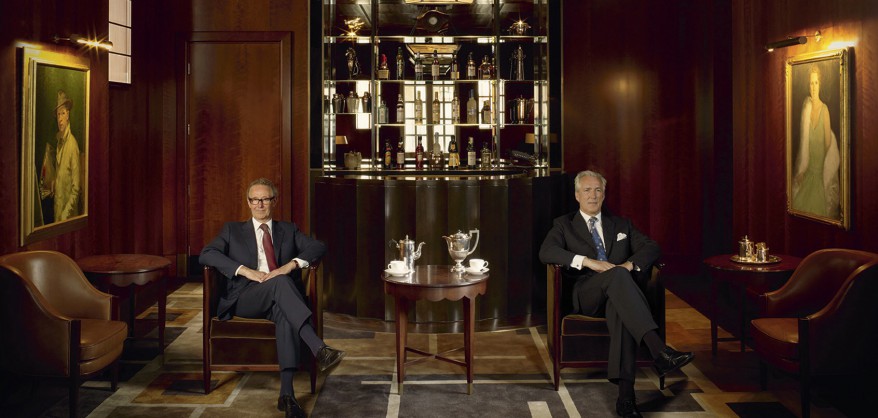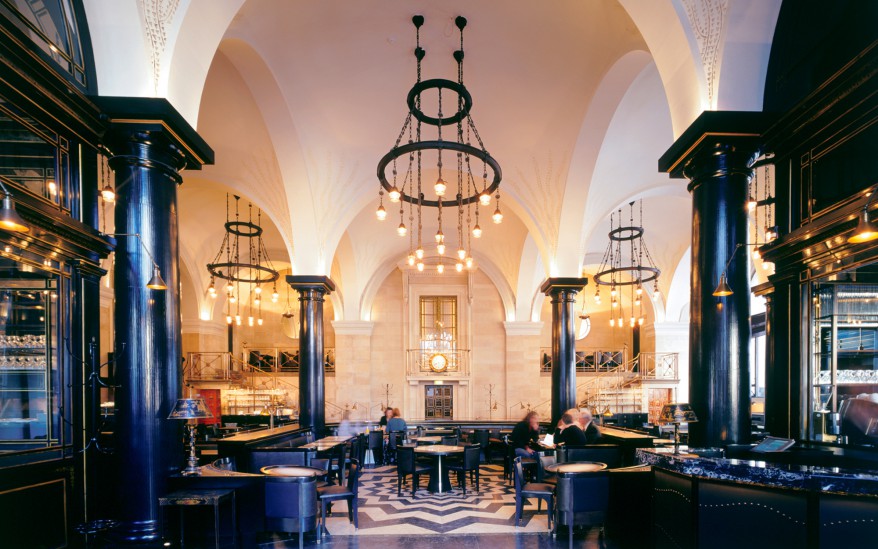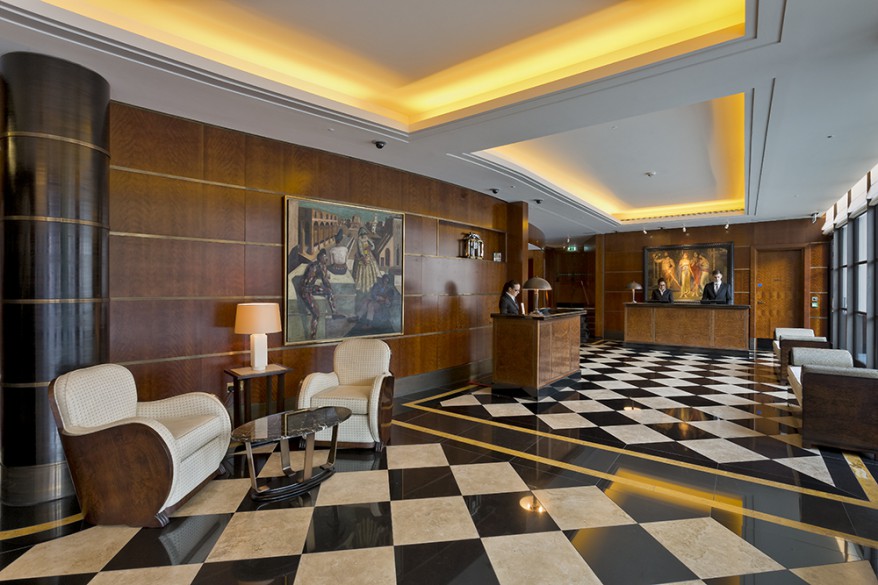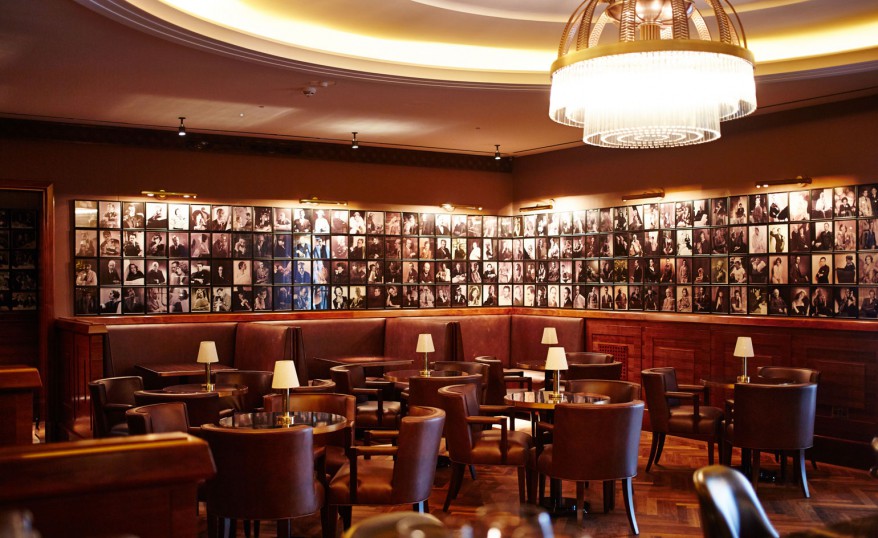Corbin & King: Restaurateurs, Kings of Hospitality
Meet the visionary restaurateurs turned hoteliers who are behind some of the most iconic and influential spaces in London, including The Beaumont and The Wolseley

Chris Corbin and Jeremy King have mastered the art of creating new restaurants that feel as though they have belonged to London for decades. The pair first met while working at popular restaurants in the ‘70s: Corbin at Langan’s Brasserie while King was maitre d’ at American eatery Joe Allen’s. The pair joined forces to buy Le Caprice in 1981, an iconic spot in Piccadilly dating back to the 1940s. A tough start did not scare them off: Le Caprice was soon followed by the opening of the Ivy in 1990 and J. Sheekey in 1998. A theme of reinvention soon emerged to shape their business practice: the reimagining of iconic but dated restaurants for the current times, creating spaces that play host to a rich cultural inheritance while also rising to the call of new cuisine, fashion, and urban culture.
Corbin & King, which is the eponymous name of their current main operating business, debuted in 2003 with the opening of The Wolseley in Piccadilly. The duo had wetted their palettes with the purchase and renovation of The Ivy and J Sheekey in 1998 and passing off Caprice Holdings to Signature Restaurants in the same year (though the two remained non-executive directors until 2002), which is now property of Richard Caring. The Wolseley is undoubtedly the jewel in the crown, reported to have the highest turnover of any restaurant in the UK. But more importantly, it was a milestone in the collective imaginary of Corbin and King: the pair finally achieved their long-term ambition to open an all-day European-style brasserie. The Grade II Listed Building was originally constructed in the 1920s as a car showroom space for Wolseley Motors. Following a few short years of housing a Chinese restaurant, it became the nest of the Wolseley, which redefined the European Cafe in London and soon became the module for future enterprises of the same breed.

Since the Wolseley, the duo has continued to spearhead a number of projects: The Delaunay in London’s Aldwych (2012), Brasserie Zédel in Sherwood Street (June 2012), Colbert on Sloane Square (October 2012), Fischer’s on Marylebone High Street (Spring 2014), The Beaumont Hotel, which opened in Mayfair at the end of September 2014, and most recently Bellanger in Islington (December 2015).
The Beaumont, in its five-star timeless-cool ambiance, is the physical manifestation of old-world luxury. With all checkerboard granite, gold tavertine, curved cherry oak interior charm, the exterior of the hotel looks, from the right light and perspective, every bit the part of a high-rise condo in Miami Beach. White on white on white, its sunny facade is now host to a live-in art installation by British sculptor Antony Gormley, which is bound to turn more than a few heads: that is, if it’s even noticed in the first place. The all white get-up causes this absolute abnormality to very nearly blend in. Seamlessness is the running theme of The Beaumont: whether it’s camouflaged robot sculptures or a conjuring of the art deco era within its opulent interiors. Reams of research was put into mimicking the original 20s and 30s aesthetic, effectively creating a time portal that escapes any feeling of cliche or overproduction.


The Beaumont is a place whose timeless charm moves any visitor. As boutique hotels become more and more concept-driven and angled at a particular clientele, The Beaumont keeps things open through its brilliant and atmospheric historical depths, cultivated and drawn out through its patterns, textures, and materials. And while today’s hotel and restaurant design trend more toward smaller, intimate spaces, The Beaumont keeps the grandeur of open space front and centre with its sprawling lobby. There is an unmistakable air of quiet to the hotel that feels almost contemplative: like the knowing silence that characterizes parlours and other grand interiors, The Beaumont feels much older and wiser than its years. It is this sensitivity toward
All of Corbin & King’s enterprises are held together by a strong narrative with deep historical backing that is steeped in interwar glamour and a kind of luxury that is immediately and universally appealing. The two know what they like, what they’re good at, and when it comes time to call on help for building the projects of their dreams, they stick to those they trust: such as David Collins, who has designed The Wolseley, The Delaunay, Brasserie Zédel, Bellagner and Colbert. Collins, famed for his decoration of Madonna’s flats in London and New York, whose untimely death in 2013 cut his career, made a name for himself through his luxurious interior design sensibilities: a magnet for Corbin & King, naturally. This partnership was cut all too short by Collins’ untimely death in 2013. But, like any true visionary, Corbin & King forged on, and their two most recent projects — the Beaumont, designed by Fiona Thompson of Richmond, and the Bellanger, which was refit by David Collins’s protégé, Shayne Brady — are charged with an new energy of innovation, even by keeping it traditional. After 30 years in the business the duo are a testament to the truth: good taste does not expire.

On Building A Narrative For The Beaumont Hotel In Mayfair:
“Yes, we had a beautiful art-deco building from 1926…So I thought, let’s make up a history. London, pretty depressed in 1926. Why would someone build a hotel? And I was transported to New York, and I imagined a very good hotel manager, lamenting to two of his wealthy guests that Prohibition had made being a hotelier impossible, and that he was getting out of the business. They persuaded him not to, and they said: why don’t you go somewhere else? And they talked about London, where he’d been in World War 1, attached to the American Embassy around the corner. They said: why don’t you go there and we’llfinance you to open a medium-sized hotel? Immediately I knew what it looked like.” — Jeremy King
On Great and Boring Restaurants:
“Great restaurants should not define things, they should be the catalyst for things to happen.” — Jeremy King
“Show me a restaurant with a fantastic view and I’ll show you a boring restaurant. Because a third of the people are looking out of the window, and the other two thirds are hacked off because they didn’t get a window seat. There’s no atmosphere.” — Jeremy King
On Finding Great Neighbourhoods And Perfect Buildings:
“Location is very important to the type of restaurant. We take an organic approach and ask ourselves questions when entering a new neighbourhood: will we fit in? Will people like us? Do people want us? It’s important to work that way round: we are careful not to impose ourselves on an area. Being welcomed by a new neighbourhood is a wonderful thing for a restaurateur.” — Chris Corbin